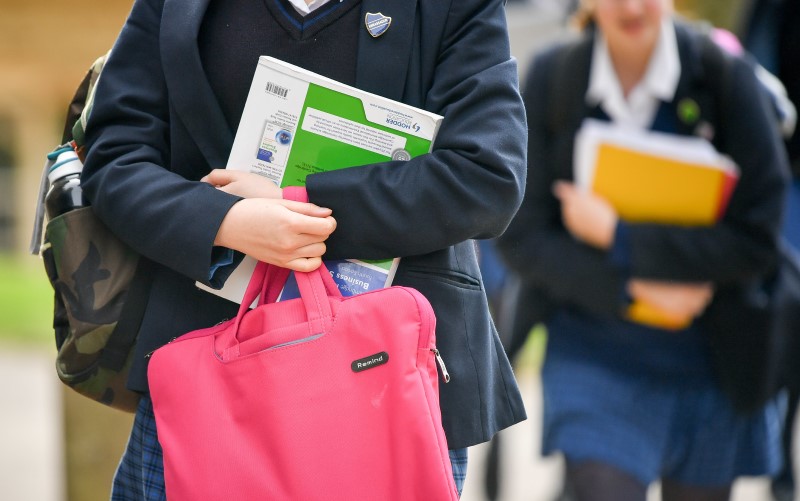
Unless there is a dramatic change in school funding policies the vast inequity in school outcomes will continue for the rest of the decade.
New school funding figures show that government funding for private schools increased by nearly five times that for public schools over the past 10 years.
The figures put pressure on Labor in the lead-up to the federal election to end the chronic under-funding of public schools. Public schools face a funding crisis because they will continue to be massively under-funded over the rest of the decade under existing arrangements.
The new figures published in the 2022 Report on Government Services (ROGS) show that government (Commonwealth and state) funding of private schools, adjusted for inflation, increased by $3,338 per student between 2009-10 and 2019-20 compared to $703 per student for public schools.
The contrast is even worse in percentage terms. Funding per private school student increased by 34 per cent compared to only 5 per cent for public schools, that is, nearly seven times the increase for public schools.
The funding policies of both the Commonwealth and state governments have favoured private schools over public schools. Commonwealth funding for private schools increased by $3,001 per student compared to $1,181 for public schools. State governments cut funding for public schools by $478 per student while increasing funding for private schools by $337 per student.
The ROGS figures have been adjusted to exclude book entry items (user cost of capital, depreciation) and other items (payroll tax, school transport) which are included in the report’s data for state/territory government recurrent funding of public schools but are not included in the figures for private schools.
The new figures put pressure on Labor to deliver a better funding deal for public schools. Labor’s recent school funding policy announcement is only a drip in the bucket of what is needed to fully fund public schools. Labor pledged $440 million to schools for better ventilation, building upgrades, and mental health support, to provide a Covid-safe learning environment. The funding will go to all schools – public and private.
The program includes $240 million for upgrades to improve ventilation and air quality by buying air purifiers, upgrading heating, ventilation, and airconditioning systems, and other facilities. Another $200 million will be used for more school counsellors and psychologists, and extra funding for camps, excursions, as well as sporting and social activities that improve student wellbeing.
It would be catastrophic if this were Labor’s sole commitment on school funding in its federal election platform. As a result of the funding changes over the past decade and more, public schools have far fewer human and material resources than Catholic and Independent schools despite having to cater for the vast majority of disadvantaged students. Moreover, these inequalities in funding will worsen over the rest of the decade under the current arrangements.
Public schools face a funding crisis over the rest of the decade. Public schools in all states except the ACT will be funded at 91 per cent or less of their SRS until at least 2029. The average funding share of their SES will be only 90.4 per cent by 2029. In contrast, private schools in all states except the Northern Territory will be funded at 100 per cent or more of their SRS by 2022 and through to 2029. Their average funding share will be 101 per cent in 2029.
These differences in government funding shares of the SRS have huge implications in terms of the funding available to public and private schools. Public schools will be massively under-funded for the rest of the decade while private schools will be over-funded.
The cumulative under-funding of public schools over 2019-2020 will amount to about $74 billion. This is an average of $6.7 billion per year over the 11 years. Under-funding of public schools in NSW, Victoria and Queensland will be nearly $60 million. In contrast to this massive under-funding of public schools, private schools will be over-funded by about $5 billion.
The disparities in income levels between public and private schools translates into large differences in the availability of human and material resources. OECD data reveals a shocking misallocation of teaching and physical resources between public and private schools in Australia. Much higher proportions of students in public schools have their learning hindered by inadequate resources.
Nearly one-quarter of public secondary school students have their learning hindered by a shortage of teachers and one-fifth by inadequately qualified teachers, generally reflected in the high proportion of teachers having to teach out-of-field. There are vast differences in the quality of school infrastructure.
Public schools do the heavy lifting in our education system. They enrol 80 per cent or more of disadvantaged students – low SES (80 per cent), Indigenous (84 per cent), extensive disability (86 per cent), and remote area students (82 per cent). Also, over 90 per cent of the most disadvantaged schools are public schools.
International and national test results show huge inequities in school outcomes. Disadvantaged students are two to four years behind high SES students. There also large disparities in year 12 outcomes. Unless there is a dramatic change in school funding policies the vast inequity in school outcomes will continue for the rest of the decade.
Labor must step up for public schools in this election campaign. Labor’s education spokeswoman, Tanya Plibersek, has said that “the inequity at the heart of our funding system absolutely has to change” [Geelong Advertiser, December 11]. She said that every public school student should get 100 per cent of their SRS. This should be the central feature of Labor’s school funding election platform. There can be no reneging on this or it will be seen as a betrayal of public schools by Labor.
The Greens also say they will ensure that public schools are fully funded to 100 per cent of their SRS. Unlike Labor, they have announced what this means in dollar terms. They will increase funding for public schools by $32 billion over 10 years and will increase the Commonwealth contribution to the SRS to 25 per cent to ensure that all public schools are funded at 100 per cent of their SRS.
The Greens have also announced they will revise the Commonwealth-state school funding agreements to remove the special allowances that defraud public schools of billions in funding. They will also abolish the Morrison government’s $1.2 billion Choice and Affordability slush fund for private schools and end the special deals that are keeping private schools overfunded for most of this decade.
Labor must stand “shoulder to shoulder with public schools” to ensure they are fully funded. It must commit to a large boost in Commonwealth funding for public schools and to renegotiate the Commonwealth-state funding agreements to ensure public schools are funded at 100 per cent of their Schooling Resource Standard (SRS).
It has to come up a better plan for public schools than its recent announcement if it is to regain the confidence of public school teachers, parents and community members who see a strong public school system as fundamental to improving equity in education.




